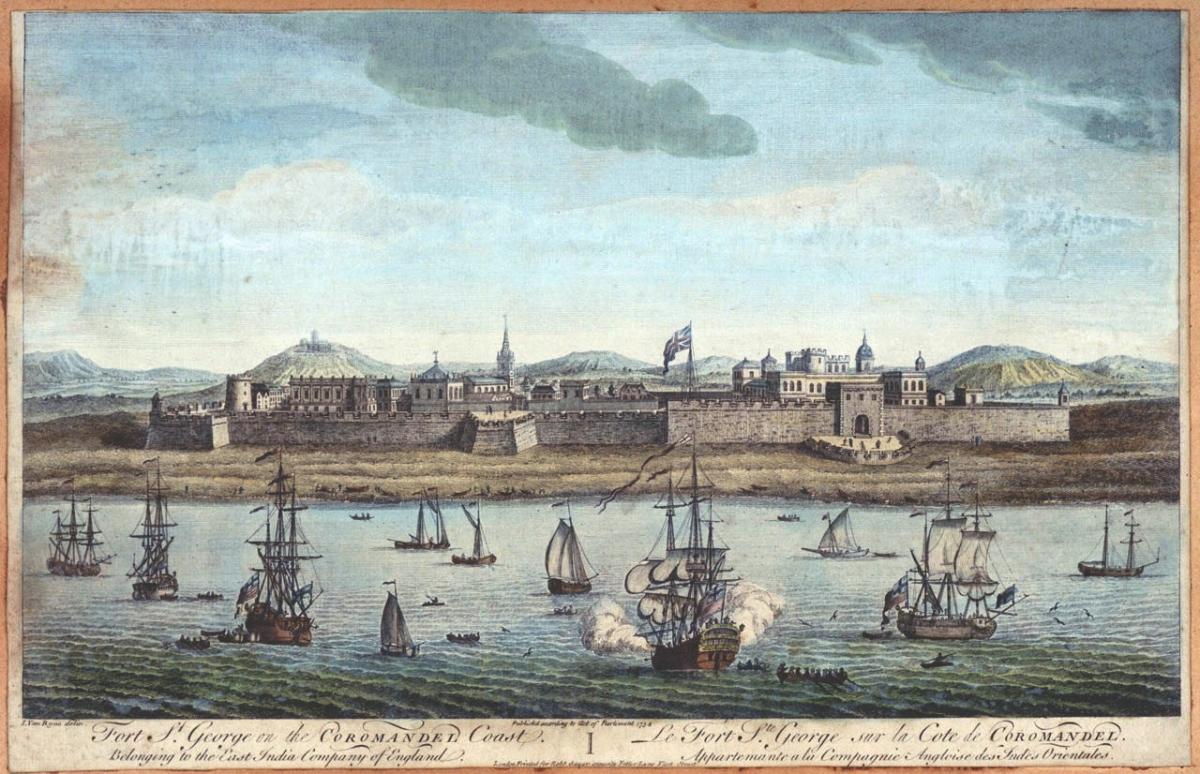Fort St. George at Madras (Chennai), India


British rule introduced an era in which officials held varying opinions regarding the caste system and whether to proceed in enforcing or dismantling it. Ultimately, there were concerns about Indian society falling apart without the structure of their long-held social order, and although many from the British side viewed caste as being an inhumane institution, they did not make any efforts to dismantle it. On the contrary, they used it to their own benefit in order to further the legitimacy of their station and exercise control over the Indians.
British segregation was exemplified when the East India Company named their first settlement, Fort St. George, “White Town” in 1639 and the surrounding Indian settlement “Black Town.” Fort St. George was founded on the coastal city of Madras, located in modern-day Chennai. It serves as an example of the public disdain for the Indian race and how it created a system that defined superiority based on fairer skin, consistent with those ideals which were first established by the Aryans and led to the development of the caste system. Entry to restaurants and educational institutions was prohibited for “Black Indians” with entry boards stating “Indians and dogs not allowed”. The British army, lacking in sufficient numbers at first, provided Indians with employment through menial jobs and recruitment for low-ranked army positions. Once again, lighter-skinned Indians and those from the upper castes were given preference over their darker counterparts and hired more frequently. This reinforcement of the social hierarchy was furthered by the British Empire favoring light-skinned Indians as allies and giving them certain privileges not provided to the dark-skinned citizens in lower castes.
Image Sources:
Gantz, JW. An Artist’s Rendition of St. Mary’s Church, the First Anglican Church in India. 19AD, https://theculturetrip.com/asia/india/articles/a-brief-history-of-fort-s.... Accessed 10 Nov. 2021.
An Artist’s Rendition of Fort St. George on the Coromandel Coast. Wiki Commons, 18AD, Royal Museums Greenwich, https://theculturetrip.com/asia/india/articles/a-brief-history-of-fort-s.... Accessed 10 Nov. 2021.
Deshpande, Manali S. “History of the Indian Caste System and Its Impact on India Today.” California Polytechnic State University, 2010.
Kositsky, Sasha Riser. “The Political Intensification of Caste: India Under the Raj .” Penn History Review , vol. 17, no. 1, Dec. 2009, https://repository.upenn.edu/cgi/viewcontent.cgi?article=1012&context=phr. Accessed 10 Nov. 2021.
Mishra, Neha. “India and Colorism: The Finer Nuances .” Washington University Global Studies Law Review , vol. 14, no. 4, 2015, https://openscholarship.wustl.edu/cgi/viewcontent.cgi?article=1553&conte.... Accessed 10 Nov. 2021.
Olcott, Mason. “The Caste System of India.” American Sociological Review, vol. 9, no. 6, Dec. 1944, pp. 648–657., https://www.jstor.org/stable/2085128?origin=crossref&seq=1#metadata_info....
Ramesh, Kamboju. “Caste System and Political Change in Indian Democracy – A Study.” International Journal of Creative Research Thoughts , vol. 8, no. 11, Nov. 2020, https://www.ijcrt.org/papers/IJCRT2011075.pdf. Accessed 10 Nov. 2021.
Parent Map
Coordinates
Longitude: 80.270718400000
